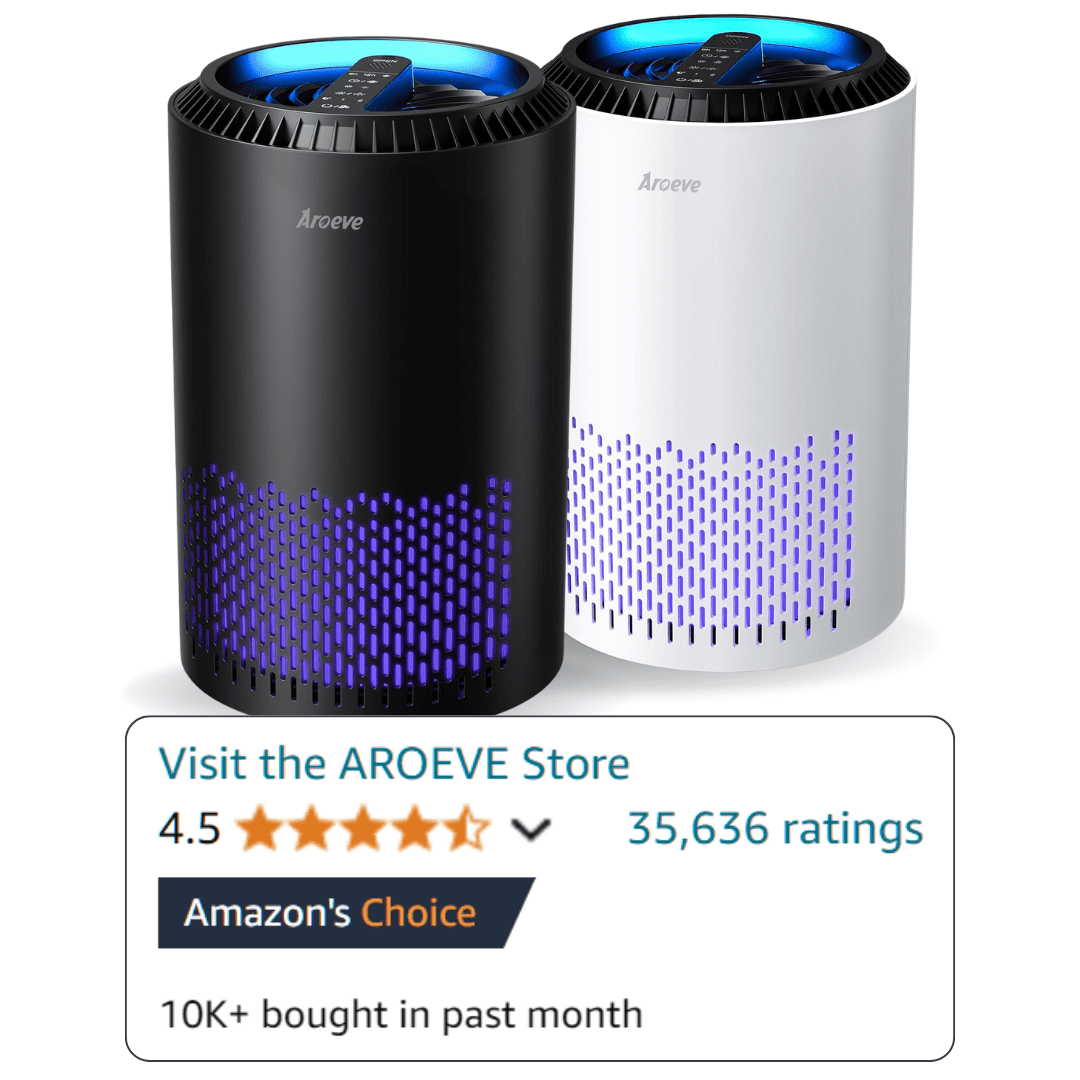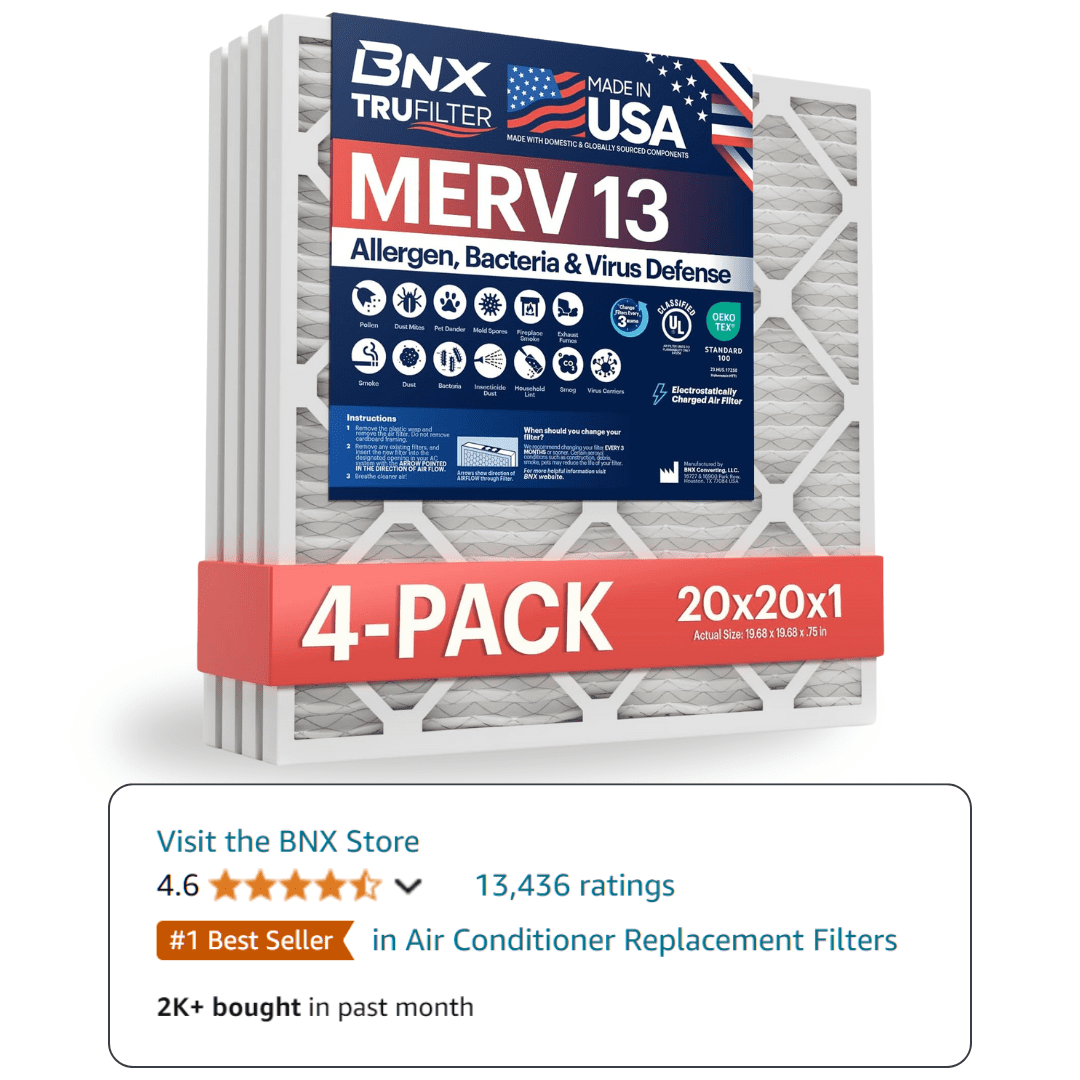Introduction: What is Mold and Why Should You Care?
Mold. The word itself can conjure images of dark, damp corners and concerns about health and property.
But what exactly is it?
Molds are a type of fungi, ubiquitous in nature, playing a vital role in breaking down dead organic matter like fallen leaves and dead trees. They reproduce by releasing tiny, lightweight spores that travel through the air. Outdoors, mold is usually not a problem.
However, mold becomes an issue when these spores land on damp surfaces indoors.
Unlike outdoors, enclosed spaces can trap moisture, providing the perfect breeding ground for mold colonies to establish and grow. When mold grows indoors, it doesn’t just look unsightly; it can pose significant risks. These include potential health effects from exposure to spores, mycotoxins, and volatile organic compounds (MVOCs), as well as structural damage to your home as mold consumes the materials it grows on.
Understanding mold – how to identify it, the conditions it needs to thrive, its potential effects, and how to safely manage it – is crucial for maintaining a healthy and safe living environment.
This guide will provide you with the knowledge to tackle mold effectively.
Identifying Mold Growth: What to Look (and Smell) For
Detecting mold early is key to preventing larger problems. Your senses – sight and smell – are your primary tools.
Visual Clues
Mold isn’t always black and fuzzy. It can appear in various colors and textures:
- Colors: Common indoor molds can be black, white, green, gray, brown, yellow, orange, or even pink. The color often depends on the species, the food source, and the age of the colony. Crucially, color alone cannot definitively identify the mold type or its potential risk.
- Textures: Mold growth can appear fuzzy, powdery, slimy, or velvety.
- Staining: Look for discoloration or staining on walls, ceilings, tiles, grout, wood, fabrics, and other surfaces, especially in areas prone to moisture.
- Common Mold Appearances (Examples):
- Aspergillus: Often appears powdery and can range from yellow-green to blue-green or brown. Frequently found on dust, food items, and building materials.
- Penicillium: Characterized by its blue-green, velvety texture. Famous for its role in producing penicillin, but some species can cause allergies indoors. Often found on water-damaged materials.
- Cladosporium: Typically olive-green to brown or black. Can grow in both cool and warm conditions. Often found on fabrics, wood surfaces, and especially around window frames.
- Stachybotrys chartarum (“Black Mold”): Often slimy (when wet) and dark greenish-black. Requires significant, constant moisture and cellulose-rich materials (like drywall, wood, cardboard) to grow. While infamous, it’s less common than other mold types.
- Important: Mold Look-Alikes! Not every stain or discoloration is mold. Be aware of:
- Efflorescence: A white, crystalline, or powdery deposit of mineral salts left behind on concrete, brick, or stucco after water evaporates. It’s harmless but indicates moisture intrusion that could lead to mold. It will typically dissolve in water, unlike mold.
- Dirt and Staining: Simple dirt accumulation, water stains, or soot can sometimes resemble mold growth. Try wiping the area (using appropriate precautions if you suspect mold) – dirt often wipes away easily, while mold may smear or appear more ingrained.
Smelly Clues
Often, you’ll smell mold before you see it.
A persistent musty, damp, or earthy odor is a classic indicator of microbial growth. If you notice this smell, especially if it’s stronger in certain areas or when the HVAC system runs, it warrants investigation even if no mold is visible. This smell is caused by Microbial Volatile Organic Compounds (MVOCs), gases produced by actively growing mold.
Hidden Mold Indicators
Mold thrives in hidden places. Look out for indirect signs:
- Warping or Buckling: Walls, floors, or ceilings warping can indicate moisture behind the surface, a prime condition for mold.
- Peeling or Bubbling Paint/Wallpaper: Moisture trapped behind these surfaces can cause them to detach and often indicates hidden mold growth.
- Persistent Odors: If a musty smell lingers despite cleaning and airing out, mold might be growing within walls, under floors, or inside ventilation systems.
- Past Water Damage: Areas known to have suffered leaks, floods, or high condensation are high-risk zones for hidden mold.
Common Types of Household Mold (and Does “Black Mold” Mean Toxic?)
While thousands of mold species exist, a few are commonly found indoors:
- Aspergillus: Very common, found in air conditioning systems, on dusty surfaces, and various building materials. Some species can cause allergic reactions or respiratory infections, especially in immunocompromised individuals. Certain species can produce mycotoxins (aflatoxins).
- Penicillium: Recognizable by its blue-green color. Found on water-damaged materials, wallpaper, fabrics, and decaying food. Can trigger allergies and asthma. Some species produce mycotoxins.
- Cladosporium: Often found indoors and outdoors. Typically black or olive-green. Can grow on various surfaces like wood, textiles, tiles, and even in damp corners or bathrooms. A common trigger for allergies and asthma symptoms.
- Alternaria: Another common allergenic mold found both indoors and outdoors. Often appears dark green, gray, or brown with a velvety texture. Frequently found in damp areas like showers, under sinks, or near window frames.
- Stachybotrys chartarum: The infamous “black mold.” Requires high moisture levels and cellulose material (wood, paper, drywall). It’s often slimy and black/dark green. While it can produce potent mycotoxins (trichothecenes), its presence doesn’t automatically mean dangerous levels of toxins are airborne.
Clarifying “Toxic Mold”: The term “toxic mold” is somewhat misleading. Molds themselves aren’t toxic, but certain species can produce chemical byproducts called mycotoxins under specific conditions. Stachybotrys is well-known for this, but some species of Aspergillus and Penicillium can also produce mycotoxins.
Key Points:
- Not all black-colored mold is Stachybotrys. Many common molds are dark.
- Not all Stachybotrys colonies are actively producing mycotoxins at hazardous levels.
- Color is not a reliable indicator of risk. Any extensive indoor mold growth should be addressed, regardless of color or type, due to potential allergic reactions and property damage. Testing by professionals is the only way to identify the specific mold type and assess potential mycotoxin presence if health concerns are paramount.
Health Effects of Indoor Mold Exposure
Exposure to indoor mold affects people differently, depending on individual sensitivity, the type and amount of mold present, and the duration of exposure. The most common health effects include:
- Allergic Reactions: This is the most frequent response. Symptoms resemble seasonal allergies:
- Sneezing
- Runny or stuffy nose
- Itchy, watery eyes
- Skin rash (dermatitis)
- Dry, coughing
- Asthma Triggers: For individuals with asthma, inhaling mold spores can trigger asthma attacks, leading to wheezing, chest tightness, and shortness of breath.
- Irritant Effects: Mold spores, fragments, and MVOCs can irritate the eyes, skin, nose, throat, and lungs, even in non-allergic individuals.
- Hypersensitivity Pneumonitis: A less common, more severe immune response resembling pneumonia, which can occur after repeated or high-level exposure in susceptible individuals.
- Potential for More Severe Reactions: While research is ongoing and sometimes debated, exposure to mycotoxins or high levels of MVOCs is suspected by some researchers and health agencies to potentially cause more serious health issues in certain individuals, especially those with compromised immune systems or chronic respiratory conditions. Symptoms linked in some studies include fatigue, headaches, and neurological issues.
The Centers for Disease Control and Prevention (CDC) states that exposure to damp and moldy environments can cause a variety of health effects, primarily allergic reactions and respiratory issues. They recommend prompt cleanup of mold and addressing the underlying moisture problem. The U.S. Environmental Protection Agency (EPA) echoes these concerns, emphasizing moisture control as key to preventing indoor mold growth. [Link to EPA Mold page].
Finding the Source: Where Does Mold Typically Grow?
Mold needs moisture, oxygen, and an organic food source (wood, paper, dust, etc.) to grow. These conditions are often found in:
- High Humidity Areas:
- Bathrooms: Showers, tubs, sinks, damp towels, poorly ventilated spaces.
- Kitchens: Around sinks, dishwashers, refrigerators (drip pans), poorly vented cooking areas.
- Basements & Crawl Spaces: Often prone to dampness from groundwater seepage, condensation, lack of ventilation, or leaks.
- Areas with Water Damage:
- Leaky Pipes: Plumbing leaks inside walls, under sinks, or in ceilings.
- Roof Leaks: Water intrusion through damaged roofing or flashing.
- Flood Damage: Areas affected by flooding that weren’t dried completely within 24-48 hours.
- Condensation: On cold surfaces like window panes, metal pipes, or poorly insulated exterior walls, especially during colder weather.
- Poorly Ventilated Spaces: Closets, utility rooms, attics, laundry rooms where moisture can accumulate.
- Hidden Locations:
- Inside Walls/Ceilings: Especially around plumbing or areas with exterior leaks.
- Under Carpets and Padding: If spills or floods occurred.
- HVAC Systems & Ductwork: Filters, coils, and duct interiors can harbor mold if moisture is present.
Mold Testing: Do You Need It? DIY vs. Professional Options
A common question is whether or not you need to test for mold.
When is Testing Necessary?
- Visible Mold: If you can clearly see mold growth, the EPA generally states that testing is unnecessary. The priority is to remove the mold safely and fix the moisture source. Knowing the exact type often doesn’t change the remediation approach for smaller areas.
- Hidden Mold Suspected: If you smell mold but can’t see it, or if you’re experiencing unexplained allergic symptoms, testing (as part of a professional inspection) can help locate the source and confirm its presence.
- Health Concerns: If occupants are experiencing severe health issues potentially linked to mold, testing can help identify specific mold types present, which may inform medical diagnosis (though a direct causal link is often hard to prove).
- Real Estate Transactions: Buyers may request mold testing or an inspection as part of due diligence. Sellers might perform testing to demonstrate a property is clean.
- Post-Remediation Verification: After professional mold removal (especially for large areas), independent clearance testing is crucial to ensure the remediation was successful and the area is safe.
DIY Mold Test Kits
You’ve likely seen DIY kits (often petri dish settling plates or tape lifts) in hardware stores. While seemingly inexpensive, they have significant limitations:
- Petri Dish Kits (Settling Plates): These involve opening a dish and letting airborne spores settle onto a growth medium.
- Limitations: Mold spores are everywhere, indoors and out. A positive result only proves spores were present in the air, not that you have an active indoor colony or problem. They don’t indicate the concentration of spores (is it higher than outdoors?) or the location of any growth. Prone to false positives (normal background spores) and false negatives (not capturing spores from a hidden source). Cannot identify Stachybotrys reliably as its spores are heavy and sticky, not easily airborne.
- Limitations: Mold spores are everywhere, indoors and out. A positive result only proves spores were present in the air, not that you have an active indoor colony or problem. They don’t indicate the concentration of spores (is it higher than outdoors?) or the location of any growth. Prone to false positives (normal background spores) and false negatives (not capturing spores from a hidden source). Cannot identify Stachybotrys reliably as its spores are heavy and sticky, not easily airborne.
- Tape Lifts: You press tape onto a suspect surface and send it to a lab.
- Limitations: Only useful if you’ve already found visible mold. It can tell you the type of mold you’re looking at, but again, this often doesn’t change the small-scale cleanup approach. Doesn’t help find hidden mold or assess airborne levels.
Conclusion on DIY Kits:
Generally not recommended by professionals or agencies like the EPA for evaluating a mold problem due to their unreliability and lack of actionable information.
H3: Professional Mold Inspection & Testing
A certified mold inspector (often an Industrial Hygienist or certified microbial consultant) provides a much more thorough and reliable assessment. Their process typically includes:
- Visual Inspection: A detailed inspection of the property, looking for visible mold, moisture intrusion signs, and potential problem areas.
- Moisture Detection: Using tools like moisture meters (probe and non-invasive) and thermal imaging cameras to detect hidden moisture in building materials – the key prerequisite for mold growth.
- Sampling (If Deemed Necessary):
- Air Sampling: Uses a calibrated pump to draw a known volume of air through a collection cassette. Lab analysis identifies mold spore types present and their concentration (spores per cubic meter). This is often compared to outdoor air samples taken concurrently to determine if indoor levels are elevated. Useful for assessing overall air quality and detecting hidden sources.
- Surface Sampling (Swab/Tape Lift): Similar to DIY tape lifts but performed strategically by a professional and analyzed by an accredited laboratory. Useful for identifying mold types on specific surfaces or confirming visual identification.
- Reporting: A detailed report outlining findings, moisture issues, types and levels of mold detected (if sampled), interpretation of results, and recommendations for remediation if needed.
Importance of Certification: Hire inspectors certified by reputable organizations like the American Council for Accredited Certification (ACAC) or certified Industrial Hygienists (CIH) with experience in microbial investigations. Ensure they are independent and do not perform remediation themselves to avoid conflicts of interest.
Prevention is Key: How to Stop Mold Before It Starts
The most effective way to deal with mold is to prevent it from growing in the first place. This means controlling moisture.
- Control Moisture & Humidity:
- Fix Leaks Promptly: Repair leaky roofs, windows, pipes, or plumbing fixtures immediately.
- Ventilate: Use exhaust fans vented to the outside in bathrooms (run during and after showers) and kitchens (run while cooking). Ensure clothes dryers are properly vented outside.
- Dehumidify: Use dehumidifiers in damp areas like basements and crawl spaces. Aim for an indoor humidity level between 40% and 60%. Use a hygrometer to monitor levels.
- Improve Airflow: Open doors between rooms, use fans, and move furniture slightly away from walls to encourage air circulation, especially in humid climates or seasons.
- Clean Spills and Floods Quickly: Dry water-damaged areas and items within 24-48 hours to prevent mold growth. If materials cannot be dried thoroughly (e.g., carpet padding, insulation, soaked drywall), they should be removed.
- Manage Condensation: Insulate exterior walls, cold water pipes, windows, and attic spaces to reduce condensation formation. Wipe away condensation as soon as you see it.
- Proper Building Maintenance:
- Maintain gutters and downspouts, ensuring water drains away from the foundation.
- Slope the ground away from the building foundation.
- Regularly inspect HVAC systems, including drip pans and ductwork, and change filters frequently.
- Mold-Resistant Building Materials: When renovating or repairing, consider using mold-resistant drywall, paints, and insulation, especially in moisture-prone areas. However, remember even these materials can grow mold if moisture problems are severe and persistent.
Mold Remediation: Safely Removing Mold Growth
If you find mold, addressing it promptly and safely is crucial. The approach depends on the size of the affected area and the type of material contaminated.
DIY Small-Scale Cleanup
You may be able to handle small mold problems yourself under specific conditions:
- When it’s Appropriate:
- The affected area is small, generally considered less than 10 square feet (roughly a 3ft x 3ft patch).
- The mold is growing on hard, non-porous surfaces (e.g., tile, metal, glass, sealed concrete, hard plastic).
- The contamination is NOT within the HVAC system.
- You do not have severe allergies, asthma, or a compromised immune system.
- Safety Precautions (PPE): ALWAYS wear appropriate Personal Protective Equipment:
- N95 Respirator: To prevent inhaling spores.
- Gloves: Non-porous (rubber, nitrile, or polyurethane).
- Eye Protection: Goggles without ventilation holes.
- Cleaning Method:
- Scrub the moldy surface thoroughly with water and detergent.
- Rinse clean (if applicable).
- Dry the area completely and quickly.
- Discard any cleaning materials (sponges, rags) used on the moldy area.
- Caution Against Bleach Myth: While bleach can kill surface mold on non-porous materials, the EPA and OSHA generally do not recommend its routine use for mold cleanup. Reasons include:
- Bleach fumes are harsh and can be hazardous.
- It does not work effectively on porous materials (like wood or drywall) as the mold roots (hyphae) grow deeper than the bleach can penetrate.
- It can damage some surfaces.
- The active ingredient in bleach is mostly water, which can potentially feed remaining mold roots if not dried thoroughly.
- Effective cleaning with detergent and water, followed by thorough drying, is usually sufficient and safer.
Professional Mold Remediation Process (Based on IICRC Standards)
For mold problems larger than 10 sq ft, inside HVAC systems, caused by sewage backup, or if you have health concerns, professional remediation is necessary. Reputable companies follow industry standards, primarily the IICRC S520 Standard for Professional Mold Remediation. The process generally involves:
- Assessment & Scope Development: The remediator (sometimes working with an independent environmental professional) inspects the extent of mold growth and moisture damage to determine the work needed.
- Containment: The affected area is sealed off from the rest of the house using plastic sheeting and tape. Often, negative air pressure is established within the containment using specialized HEPA (High-Efficiency Particulate Air) filtered air scrubbers exhausted outdoors. This prevents cross-contamination of spores to clean areas.
- Air Filtration: HEPA air scrubbers run continuously within the containment area to capture airborne spores disturbed during removal.
- Removal of Contaminated Materials: Porous materials heavily contaminated with mold (drywall, insulation, carpet, ceiling tiles, rotten wood) are carefully removed, bagged, and discarded according to regulations. Semi-porous materials (like wood framing) might be cleaned via methods like sanding, media blasting (e.g., dry ice), or wire brushing, followed by HEPA vacuuming.
- Cleaning of Remaining Surfaces: Non-porous materials (metal, glass, hard plastics) and remaining semi-porous materials are thoroughly cleaned with appropriate agents (often antimicrobial biocides, used carefully according to label directions) and damp wiped. All surfaces within the containment are typically HEPA vacuumed.
- Drying: All affected structural materials must be thoroughly dried to recommended moisture levels (verified with moisture meters) before reconstruction begins. This often involves air movers and dehumidifiers.
- Post-Remediation Verification (Clearance Testing): After cleanup and drying, an independent environmental professional (NOT the remediation company) should perform a visual inspection and often air/surface sampling to verify that the remediation was successful and mold levels have returned to normal background conditions (Condition 1 per IICRC).
Finding and Hiring a Qualified Mold Remediation Company
Choosing the right company is crucial for effective and safe remediation:
- Certifications: Look for companies certified by the IICRC (Institute of Inspection Cleaning and Restoration Certification). Ensure the technicians working on your project are also certified (e.g., Applied Microbial Remediation Technician – AMRT).
- Insurance: Verify they have adequate general liability insurance AND specific contractor’s pollution liability (CPL) insurance covering mold-related work. Ask for proof.
- References: Request and check references from previous clients.
- Detailed Scope of Work: Get a written contract outlining the specific steps they will take (following IICRC S520), materials to be used, containment procedures, criteria for completion (clearance testing), and cost.
- Avoid Conflicts of Interest: Ideally, the company performing the remediation should not be the same company performing the initial assessment/testing or the post-remediation clearance testing. Use an independent environmental professional for testing.
Mold and Your Rights in California (Renters & Landlords)
In California, landlords have a legal responsibility to maintain their rental properties in a habitable condition. This is known as the “implied warranty of habitability.” While California law doesn’t have specific permissible mold exposure limits, CA Civil Code § 1941.1 lists conditions that make a dwelling untenantable. Substandard conditions can include dampness and visible mold growth that endangers the health of occupants (as determined by a health officer or code enforcement).
- Tenant Responsibility: Report any leaks, water intrusion, or suspected mold growth to your landlord promptly in writing. Keep copies of all communication.
- Landlord Responsibility: Landlords are generally responsible for making necessary repairs to fix moisture problems and remediate mold growth that resulted from building issues (not tenant misuse).
- Resources: For more detailed information, consult the California Department of Public Health’s mold resources [Link to CA DPH Mold Page] or the California Department of Consumer Affairs guide for tenants.
Taking Action Against Mold
Mold in your home can be concerning, but it’s a manageable problem.
The absolute key is moisture control. By understanding how to identify potential mold growth, recognizing the conditions that allow it to thrive, and knowing when and how to address it – either through careful DIY cleanup for minor issues or by hiring qualified professionals for larger problems – you can protect your property and maintain a healthy living environment.
Don’t ignore the signs or smells of mold. Be proactive in prevention, swift in addressing water issues, and informed in your approach to remediation. This guide provides a foundation, but always consult certified professionals for significant mold issues or specific health concerns. Your diligence is your best defense against unwanted mold growth.
Disclaimer
This information is intended for educational purposes only. Specific mold situations require assessment by qualified professionals. Consult certified mold inspectors and remediators, and healthcare providers for health concerns.



